Selling the Scents of the Season
In 1950, most women viewed perfume as a luxury item, reserved for special occasions, and it represented less than one percent of the overall cosmetics market.1 Because it had a higher profit margin than skincare products or makeup, however, the beauty industry was eager to promote fragrance as an essential accessory.
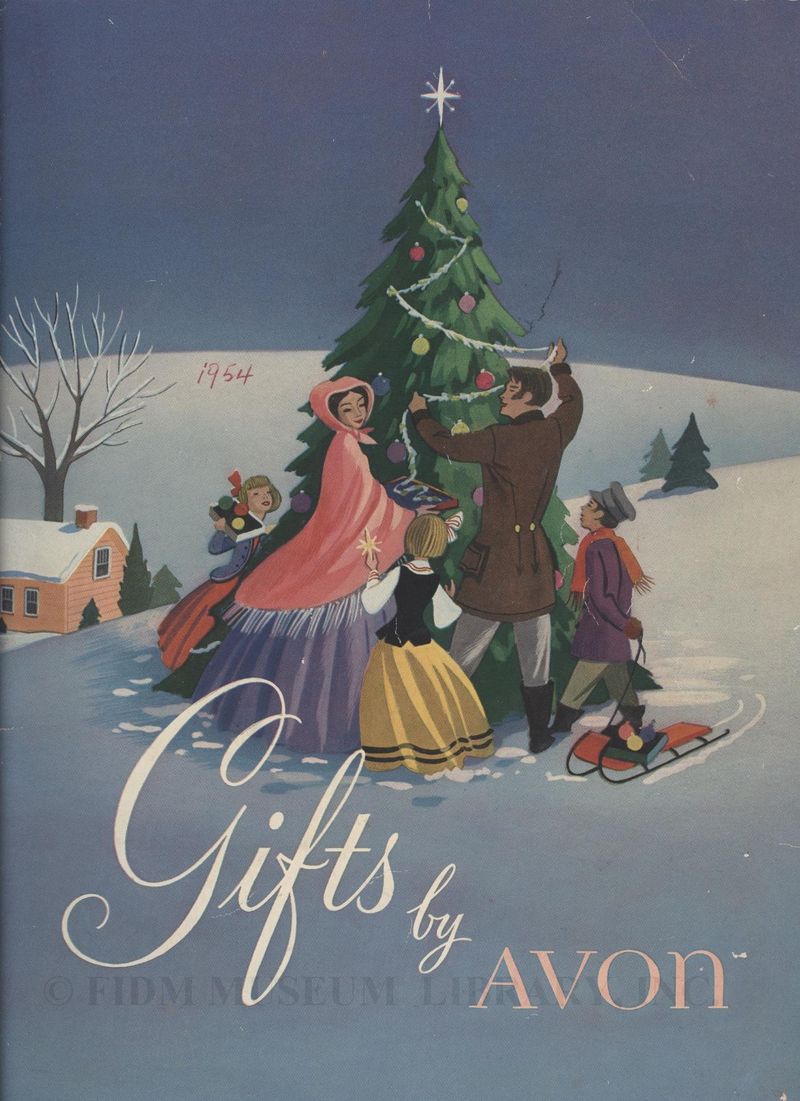 Avon Catalog
Avon Catalog
1954
Gift of the Annette Green Museum at the Fragrance Foundation
F2005.860.1368
Entrepreneurs like Estée Lauder and Elizabeth Arden introduced mild scents that could be worn every day; department stores (including Neiman Marcus) launched their own branded perfumes. Avon--founded in the late nineteenth century as a perfume company--began to advertise and expand aggressively. Fragrance was marketed alongside skincare products and makeup, or sold with them in beautifully packaged gift sets.
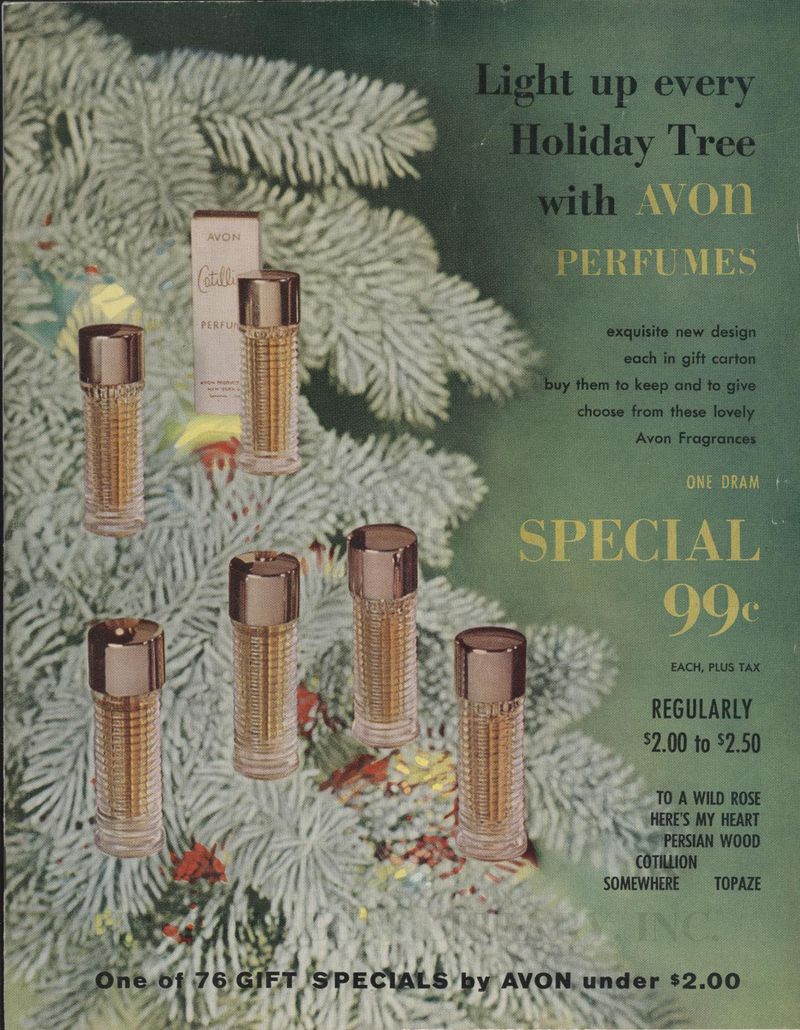 Avon Catalog
Avon Catalog
c. 1950-59
Gift of the Annette Green Museum at the Fragrance Foundation
F2005.860.1363
These marketing gambits worked. In 1952, a Good Housekeeping magazine survey found that "more women are buying perfume for themselves, and the percentage of those buying it often has almost doubled."2 But it was even more popular as a gift. Christmas was prime perfume-selling season, with Mother's Day a distant second.
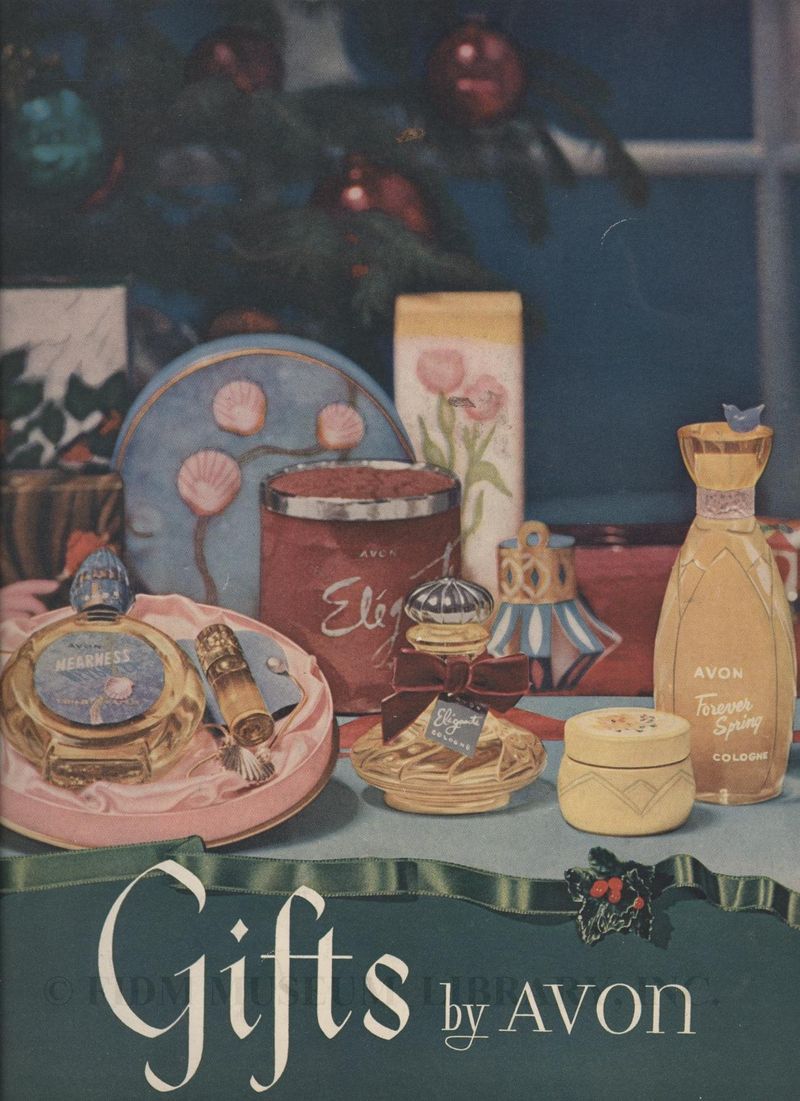 Avon Catalog
Avon Catalog
c. 1950-59
Gift of the Annette Green Museum at the Fragrance Foundation
F2005.860.1365
Lavishly illustrated, full-color Christmas catalogs--like these preserved in the FIDM Museum's Annette Greene Fragrance Archive--blended scent and sentimentality to promote perfume as the perfect present for the woman who had everything. Seasonal imagery played a prominent role in fragrance marketing and packaging. Charles of the Ritz offered a flaçon of perfume nestled in a Christmas tree ornament, and bath oil in a Santa-shaped bottle.3 The Elizabeth Arden catalog below included a pink bottle of perfume lashed into a miniature golden sleigh.
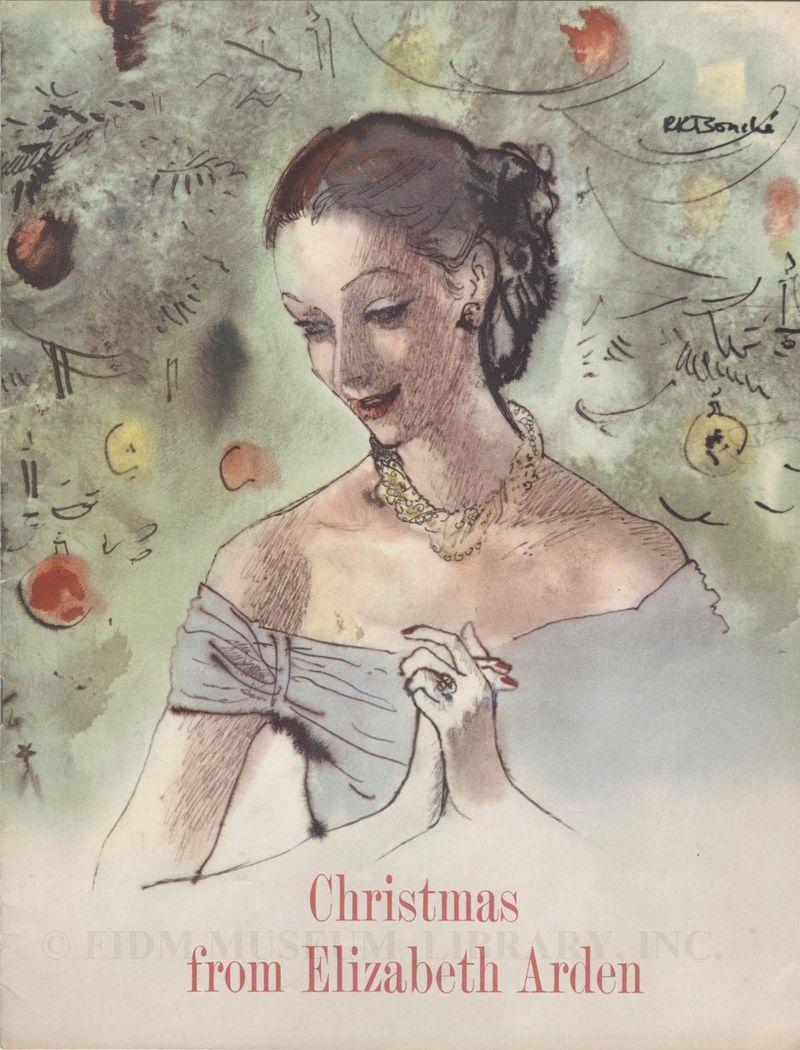
Elizabeth Arden Catalog
c. 1955
Gift of the Annette Green Museum at the Fragrance Foundation
F2005.860.1824
Today, the holiday season accounts for more than half of all perfume sales, and new scents are typically launched in the fall, to capitalize on the Christmas rush. But the industry has changed since the 1950s: men's (and even unisex) fragrances are a significant part of the market, and shoppers no longer rely on catalogs, preferring to buy online, in department stores, or from specialty beauty boutiques.
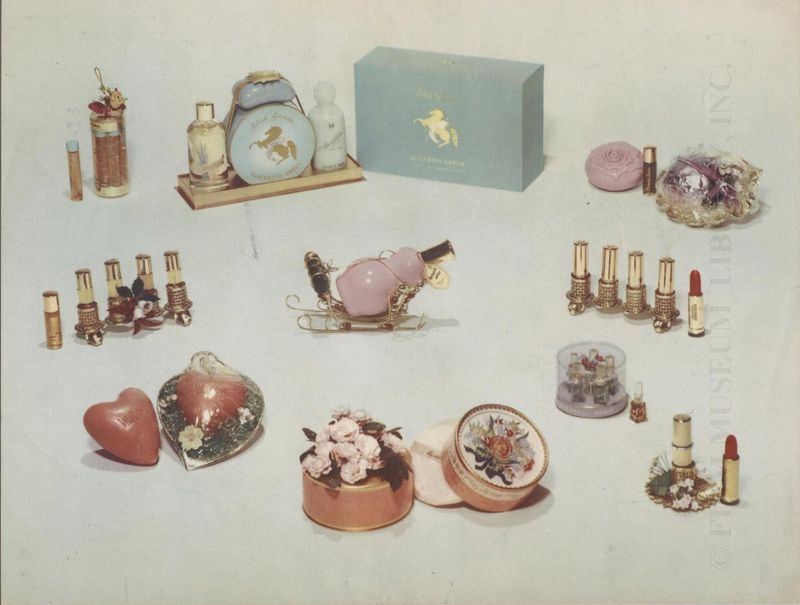 Elizabeth Arden Catalog (interior detail)
Elizabeth Arden Catalog (interior detail)
c. 1955
Gift of the Annette Green Museum at the Fragrance Foundation
F2005.860.1824
1Philip Scranton, ed., Beauty and Business: Commerce, Gender, and Culture in Modern America (New York: Routledge, 2001).
2Women's Wear Daily, May 2, 1952.
3Women's Wear Daily, September 1, 1950.